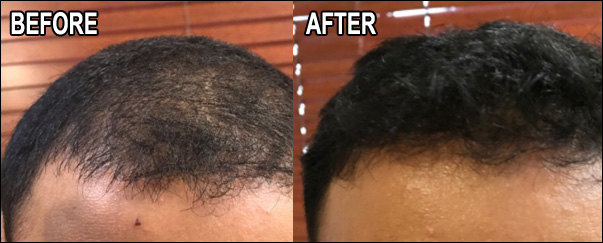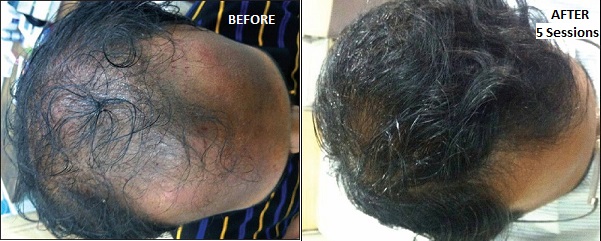Alopecia is the medical term for excessive or abnormal hair loss. There are different kinds of alopecia. What all hair loss has in common, whether it's in men or women, is that it is always a symptom of something else that's gone wrong in your body.
Hair loss can either be due to hormonal imbalance, disease, medications or either genetic reason. That condition may be as simple as having a gene that makes you susceptible to male or female pattern baldness or one of the forms of alopecia areata.
Fortunately, hair loss may also be a symptom of a short-term event such as stress, pregnancy, and the taking of certain medications. In these situations, hair will often (though not always) grow back when the event has passed.
Substances, including hormones, medications, and diseases can cause a change in hair growth, shedding phases and in their durations. When this happens, synchronous growth and shedding occur. Once the cause is dealt with, many times hairs will go back to their random pattern of growth and shedding, and the hair loss problem stops*.
There are various options available for hair loss treatment.
1. Medication
2. PRP
3. Surgery
1. Medications
Medications are available to treat pattern baldness. We recommend only medications approved by the Food and Drug Administration (FDA) to treat hair loss.
2. Platelet Rich Plasma Injections
Platelet Rich Plasma (PRP) is a latest method for the treatment of various types of hair loss in men & women including androgenetic alopecia in men & diffuse hair loss in women. It is effective in all age groups*.

Platelet Rich Plasma (PRP) is prepared from your own blood, the process to prepare Platelet Rich Plasma (PRP) is approximately 60-75 minutes and another 25 minutes are added to inject in scalp *

The prepare platelet concentration is approximately is 300-700% more than in blood. Activated platelets release many growth factors which later help to increase hair numbers*

Dr. Abdul Hameed has more than 27 years experience in dermatology, Cosmetology and Lasers. He got his training from USA, Canada, Singapore, and Dubai. His special area of interest is Cosmetology and PRP.
3. Surgery
In the most common type of permanent hair loss, only the top of the head is affected. Hair transplant or restoration surgery can make the most of the hair you have left*.
During this procedure, your surgeon removes tiny plugs of skin, each containing a few hairs, from the back or sides of your scalp. He or she then implants the plugs into the bald sections of your scalp.
Surgical procedures are expensive and can be painful. Possible risks include infection and scarring.
(*) Disclamer : There is no guarantee of specific results. Results may vary from patient to patient based on age, sex, skin type and other factors.

